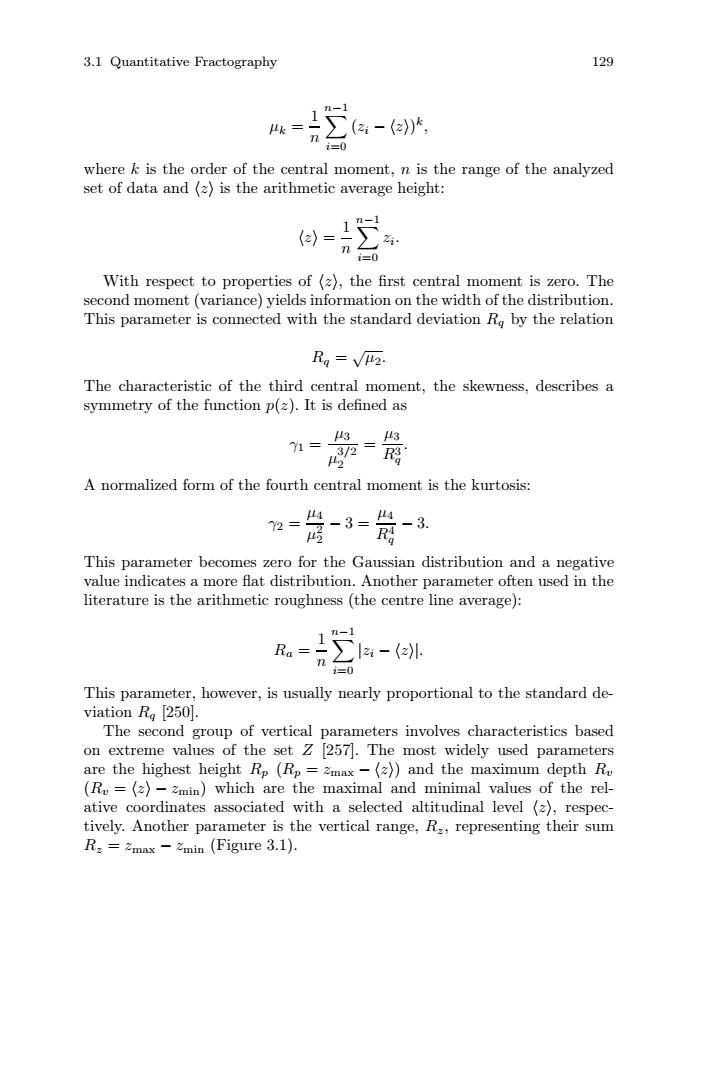正在加载图片...

3.1 Quantitative Fractography 129 n-1 Hk= (a-(), 三0 where k is the order of the central moment,n is the range of the analyzed set of data and(2)is the arithmetic average height: n-l 0 With respect to properties of (2),the first central moment is zero.The second moment(variance)yields information on the width of the distribution. This parameter is connected with the standard deviation Ro by the relation Rg=VH2. The characteristic of the third central moment,the skewness,describes a symmetry of the function p(z).It is defined as 2 A normalized form of the fourth central moment is the kurtosis: =-3=觉-8 This parameter becomes zero for the Gaussian distribution and a negative value indicates a more flat distribution.Another parameter often used in the literature is the arithmetic roughness (the centre line average): a-(z This parameter,however,is usually nearly proportional to the standard de- viation Ra [250]. The second group of vertical parameters involves characteristics based on extreme values of the set Z 257.The most widely used parameters are the highest height Rp(Rp=2max-(2))and the maximum depth Ro (R=(z)-2min)which are the maximal and minimal values of the rel- ative coordinates associated with a selected altitudinal level (2),respec- tively.Another parameter is the vertical range,R:,representing their sum R:=2max -2min (Figure 3.1).3.1 Quantitative Fractography 129 μk = 1 n n −1 i=0 (zi − z) k, where k is the order of the central moment, n is the range of the analyzed set of data and z is the arithmetic average height: z = 1 n n −1 i=0 zi. With respect to properties of z, the first central moment is zero. The second moment (variance) yields information on the width of the distribution. This parameter is connected with the standard deviation Rq by the relation Rq = √μ2. The characteristic of the third central moment, the skewness, describes a symmetry of the function p(z). It is defined as γ1 = μ3 μ 3/2 2 = μ3 R3 q . A normalized form of the fourth central moment is the kurtosis: γ2 = μ4 μ2 2 − 3 = μ4 R4 q − 3. This parameter becomes zero for the Gaussian distribution and a negative value indicates a more flat distribution. Another parameter often used in the literature is the arithmetic roughness (the centre line average): Ra = 1 n n −1 i=0 |zi − z|. This parameter, however, is usually nearly proportional to the standard deviation Rq [250]. The second group of vertical parameters involves characteristics based on extreme values of the set Z [257]. The most widely used parameters are the highest height Rp (Rp = zmax − z) and the maximum depth Rv (Rv = z − zmin) which are the maximal and minimal values of the relative coordinates associated with a selected altitudinal level z, respectively. Another parameter is the vertical range, Rz, representing their sum Rz = zmax − zmin (Figure 3.1)